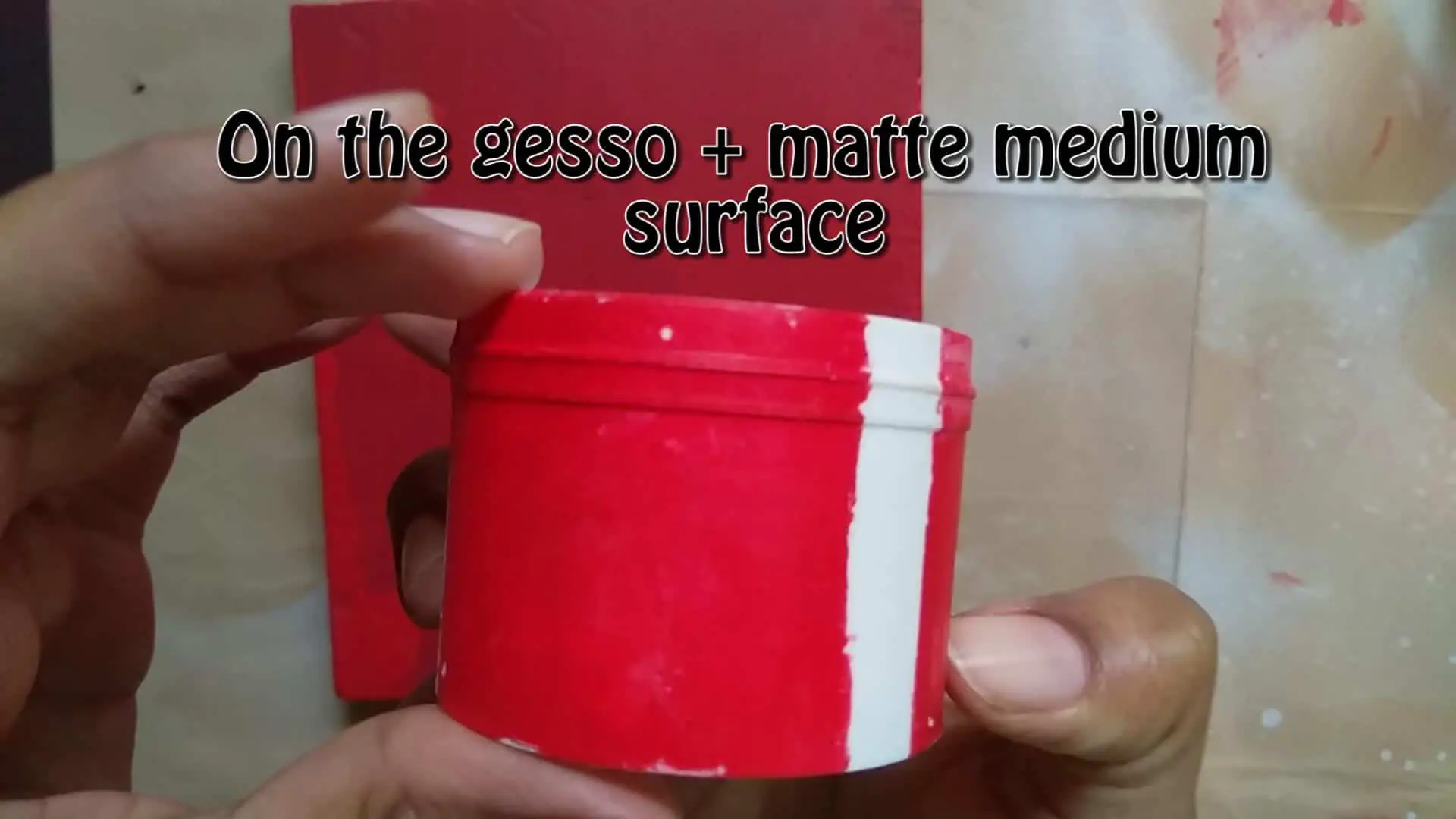Acrylic paint is the most versatile paint of all. It sticks to almost any surface. You might need to decorate some plastic pieces with acrylic paint, but it can be tricky if not done right. Let’s see how to get acrylic paint to stick to plastic.
To stick acrylic paint to plastic prepare the surface by sanding and applying primer. Apply acrylic matte medium or gel medium first and then apply gesso. Another way is using a water-based industrial primer for plastic and then applying gesso. Lightly sand between the coats and apply acrylic paint.
One of the key things to sticking acrylic paint is allowing the paint to cure for at least 3 days. You can apply acrylic paint on any surface and keep it for a long time if done correctly.
I have recorded the whole process of sticking acrylic paint on 4 different surfaces (wood, plastic, metal, and glass). You can watch the below video and follow along with me.
Materials you will need
Below I have included a list of materials you will need to stick acrylic paint on plastic with links to view the products on Amazon.
- 220 Fine grit sandpaper
- Acrylic paint
- Plastic primer
- Acrylic gesso
- Acrylic matte medium
- Acrylic gel medium
- Clear acrylic coating
- Piece of cloth
Step 1: Prepare the plastic surface for paint adhesion
Preparing the surface is one of the key things when it comes to sticking acrylic paint to any surface. Plastic surfaces are naturally smooth and rigid. Therefore paint adhesion is hard on these surfaces. Because acrylic paint needs some tooth on the surface to grab onto.
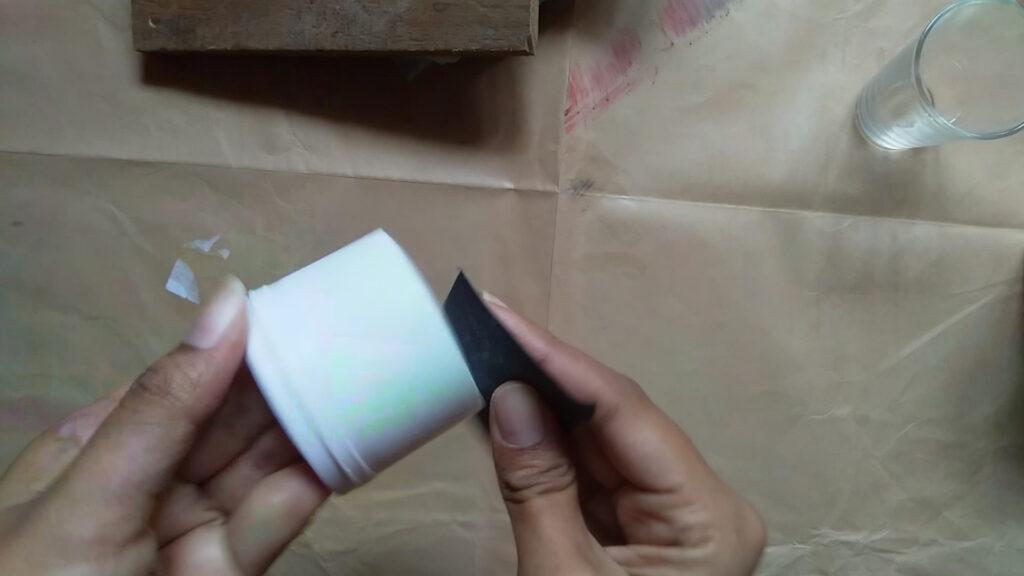
Otherwise, acrylic paint has a hard time grabbing onto the surface and end up making acrylic paint bonds only within the paint film. The result is paint peeling off.
Because of this reason we need to make teeth on plastic first so the paint can grab onto the surface better. To do that sand the surface with 220 grit sandpaper. After sanding remove the dust on the surface with a piece of cloth.
Step 2: Apply a primer to the prepared surface
After sanding the surface apply an acrylic primer. Acrylic primers can adhere to prepared plastic surfaces more than acrylic paint itself. You can apply acrylic matte medium or gel medium first onto the sanded surface. Wait for around one hour for the medium to dry and then apply gesso.
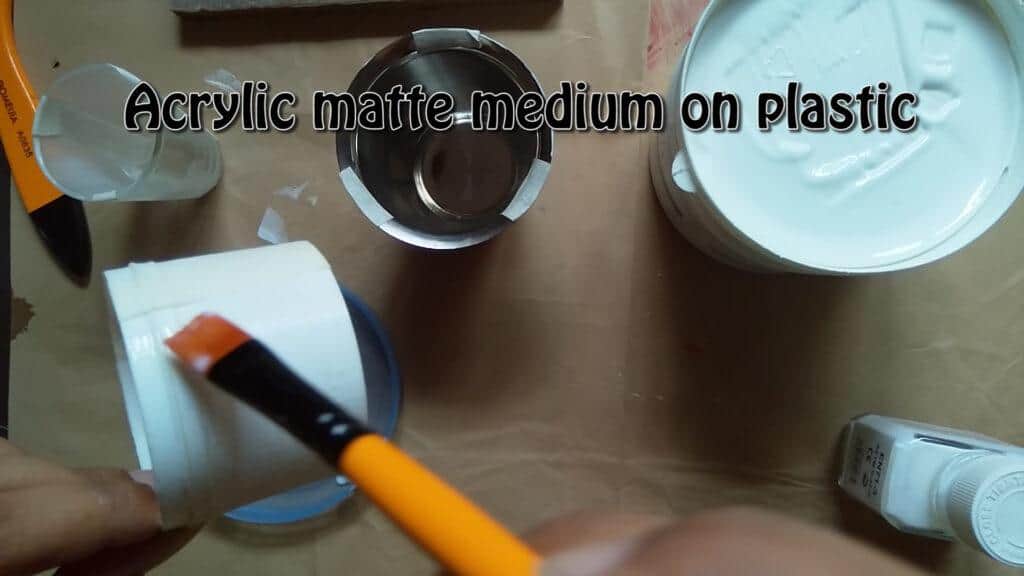
Acrylic mediums can act as glue between the surface and the paint. Because they are more adhesive than acrylic paint or gesso. Let the acrylic medium and gesso dry overnight.
If you want a more elegant finishing that is very smooth, then go for an industrial plastic primer designed for water-based paints. One of the best choices is KILZ Adhesion High-Bonding Interior Latex Primer/Sealer (link to view on Amazon).
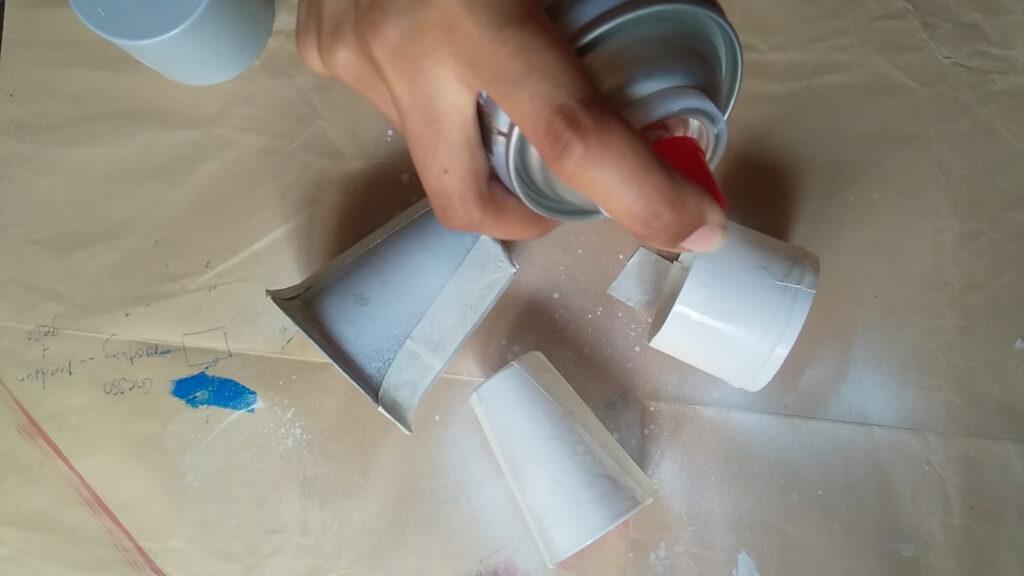
Apply the plastic primer on the sanded plastic surface and let it cure for at least 3 days (or as indicated on the paint bottle). Then lightly sand the primed surface and apply a coat of gesso. Let it dry overnight.
Step 3: Apply acrylic paint on the primed surface
Now that the primer or gesso is dry and the surface is prepared, you can apply acrylic paint. You can use craft acrylics or student-grade acrylics for this surface. As most plastic painting projects are craft projects it is best not to waste any artist-grade acrylics by using them in craft projects. Liquitex BASICS (link to view on Amazon)is a student-grade acrylic paint and is a good choice for these projects.

One of the most important things is letting the acrylic paint cure for at least 3 days. In the curing process, all the water in the acrylic paint film will escape and the paint film will harden on the surface and have better adhesion on the surface.
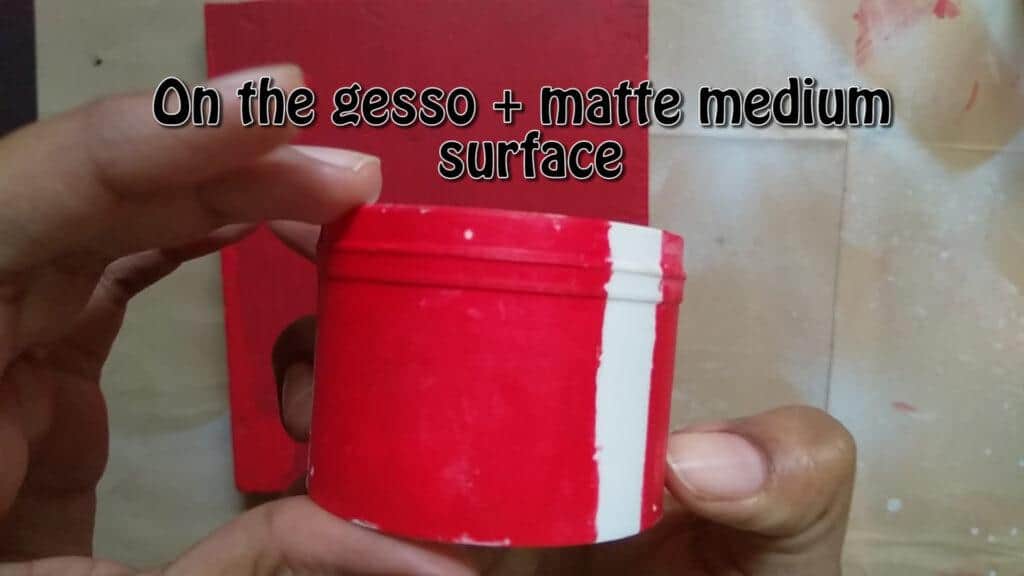
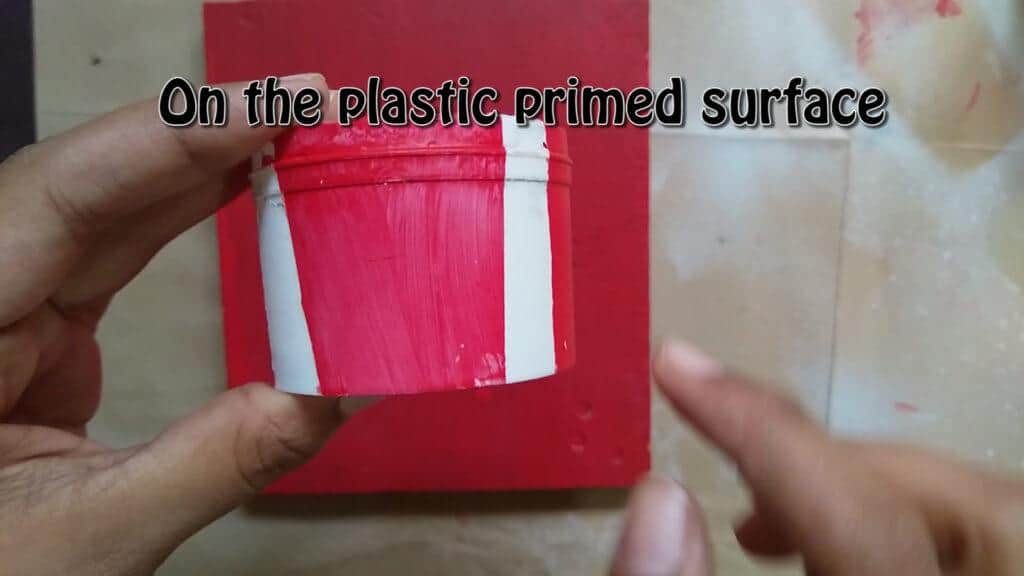
Step 4: Check the surface adhesion with an adhesion test
Now that you have let the acrylic paint cure for 3 more days, you can perform the adhesion test. The adhesion test checks how well the paint has adhered to a surface. Follow the below steps to do the adhesion test.
- When the paint is fully dry, score the paint surface in a crosshatch pattern with a sharp knife.
- Apply masking tape on the scored surface and burnish it well.
- Remove the masking tape slowly.
- If any paint comes off with the masking tape, a good surface adhesion is not achieved. This happens when you haven’t allowed the paint to fully cure, surface preparation is not done correctly or when the paint and primers are not compatible with the plastic surface.
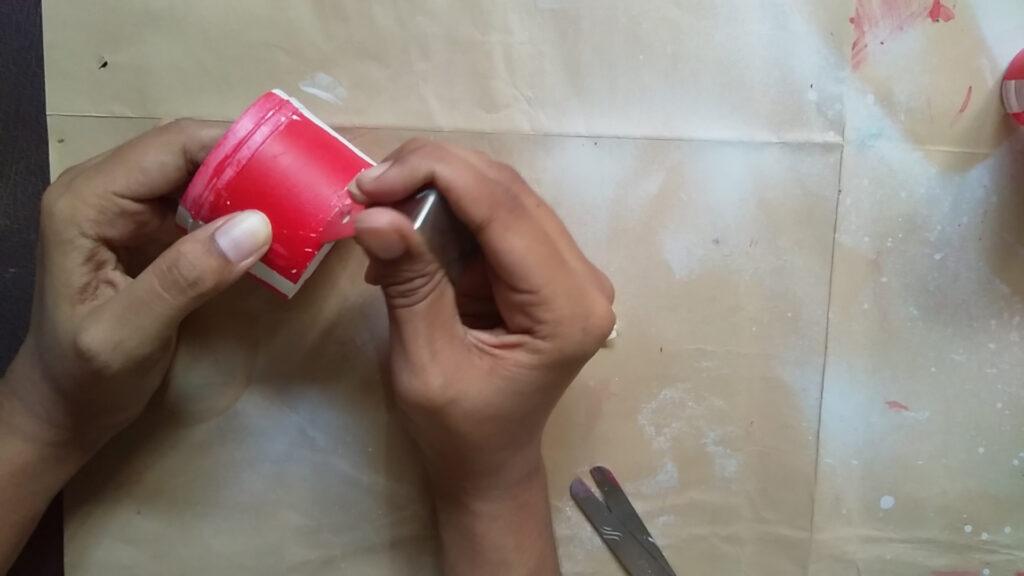
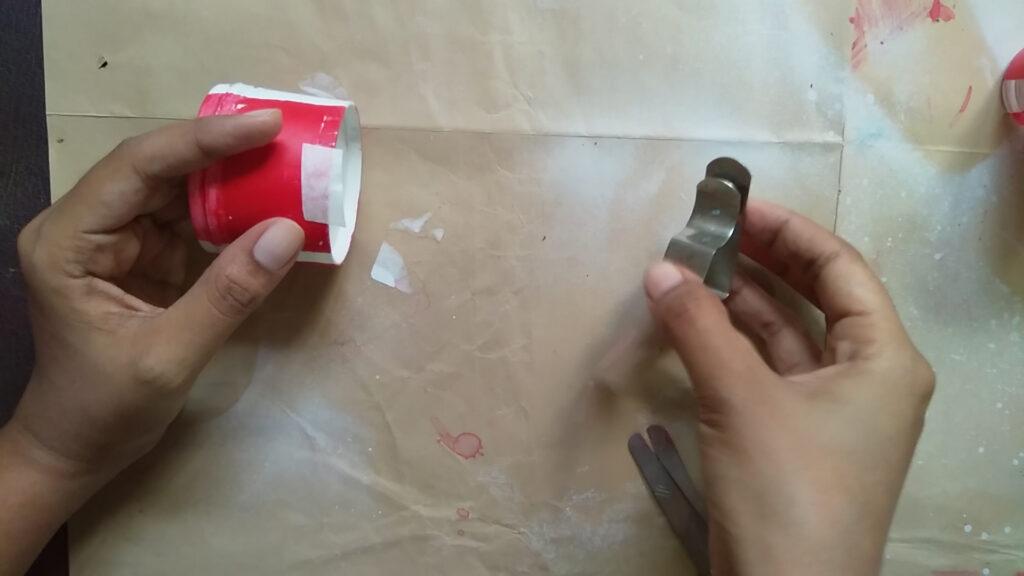
If you haven’t let the painted surface cure for more than 3 days, redo the adhesion test after fully curing the paint. Try preparing the surface again as mentioned in steps 1 and 2 and redo the adhesion test. If these did not work using a different primer or paint will help.
If you find that acrylic paint does not stick to plastic even though you followed the steps exactly as it is, the option will be to use a paint that is specifically made for plastic surfaces. Following are links to some of the best brands of plastic paints available on Amazon.
- Krylon Fusion for Plastic Spray Paint
- Krylon Fusion All-In-One Spray Paint
- Rust-Oleum Imagine Spray Paint
Step 5: Seal the painting with a clear acrylic coating
Acrylic paint can be sealed on plastic with an acrylic clear coating. Before applying the sealer make sure your painting on plastic is cured for 1 to 3 weeks. Then spray 2 or 3 coats of the acrylic clear coating on cured acrylic paint. Let the sealer dry for at least 3 days.
Finishing your work with a clear acrylic coating will protect the painted piece from environmental factors such as moisture, dust, and UV rays.
You can use the Krylon Artist and Clear Coatings Aerosol (link to view on Amazon) for this purpose. Make sure to wait until the paint is fully cured. As mentioned before 3 days is enough for thin paint layers to cure. But for thick paint layers or in high humidity, it will take around 1 to 3 weeks to fully cure the paint.
I have written a whole article about acrylic paint being sticky when the paint is not fully cured (link to the article). You will find many factors that can affect the drying process of acrylics and the best ways to tackle them in the article.
After acrylic paint is fully cured apply the clear coating. let the clear coating dry for at least 3 days. It will take more than 3 days to cure the acrylic coating in a humid environment.
I sprayed some water on the acrylic clear coated surface to test how the finished work can hold water. A clear coat holds the water very well and acted as a barrier between the paint and water. If you are going to keep your finished work outside, or if you want to give extra protection to your art piece, applying a clear acrylic coating will be the best choice.
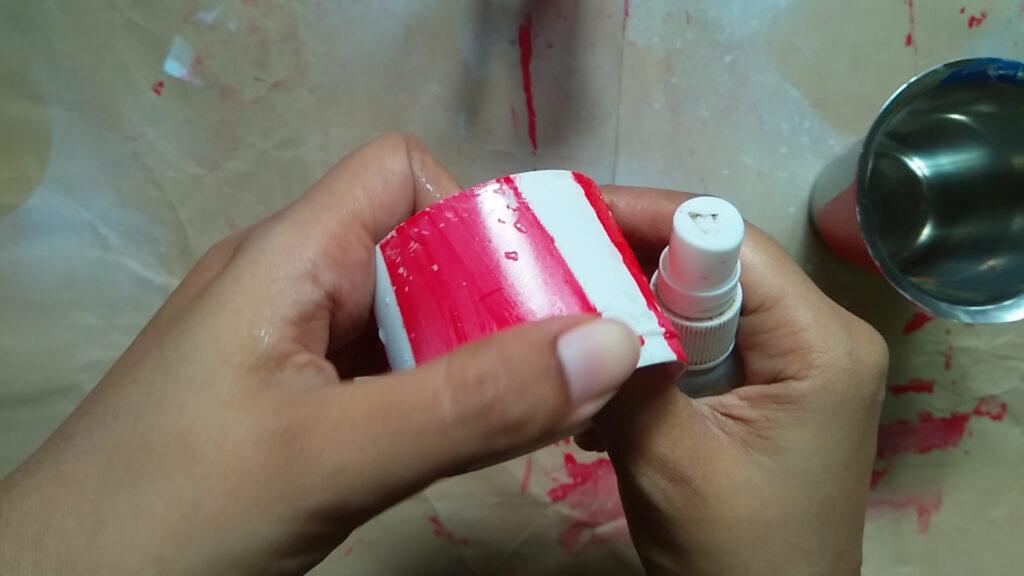
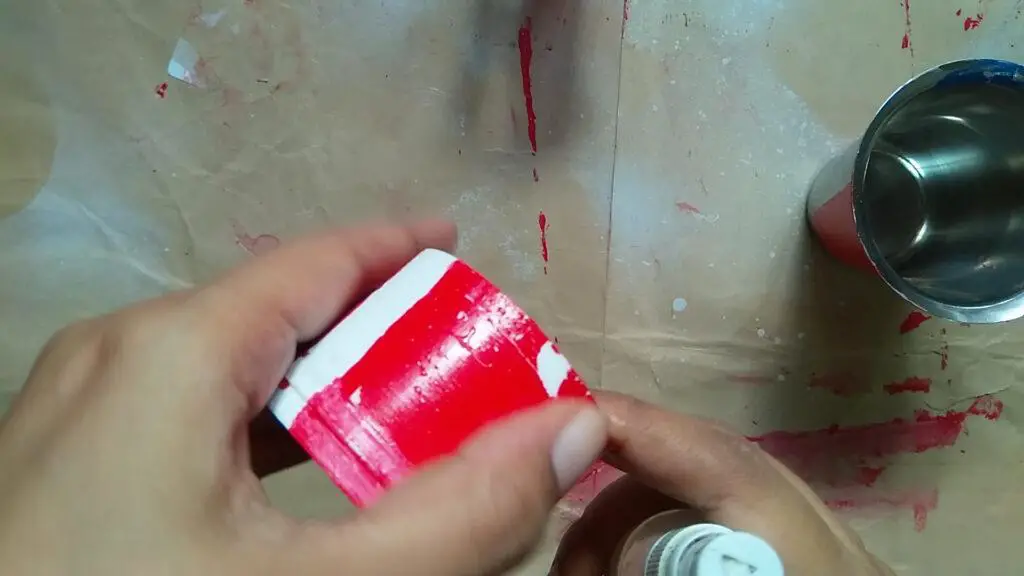
I have also written an article about what acrylic paint will not stick to. You will know what to avoid when it comes to sticking acrylic paint. Also how to stick acrylic paint on many other surfaces and keep it off.
Conclusion
Acrylic paints are widely used by both artists and crafters because of their versatility. It can stick to almost every surface from plastic to glass to metal to canvas. You can buy canvases already prepared to be painted with acrylics. But when painting on unusual surfaces which were not prepared for acrylic painting we must prepare the surfaces correctly.
Usually in the case of plastic, metal, and glass. Although gesso is enough to prime a canvas, when painting plastic, acrylic mediums with adhesive nature needs to be used under the gesso layer. You can also use industrial plastic primer for smoother and extra-fine finishing.
FAQ
Can I use acrylic craft paint on plastic?
Craft acrylic paint can be used on plastic but multiple coats of paint may be needed as the craft acrylic paint can be translucent. Plastic must be sanded with fine-grit sandpaper and primed with acrylic medium and gesso or plastic primer before applying craft acrylic paint. Finish with an acrylic clear coat.
What kind of paint will stick to plastic?
As a general rule, Industrial paints specially made for plastic (Rust-Oleum and Krylon) stick to plastic even without priming the surface. Other paints not specifically made for plastic such as acrylic and latex paints needs preparation, priming of the surface, and sealing the painted surface.

